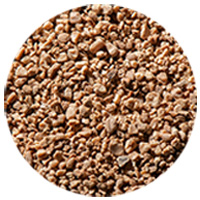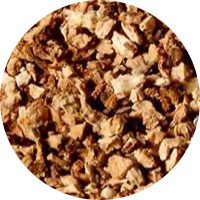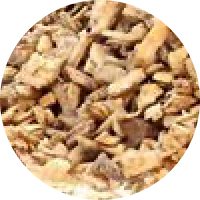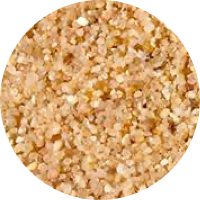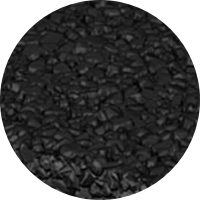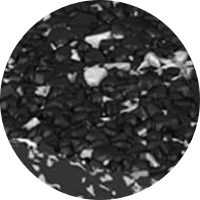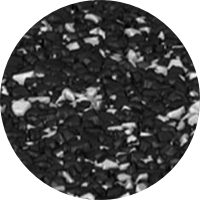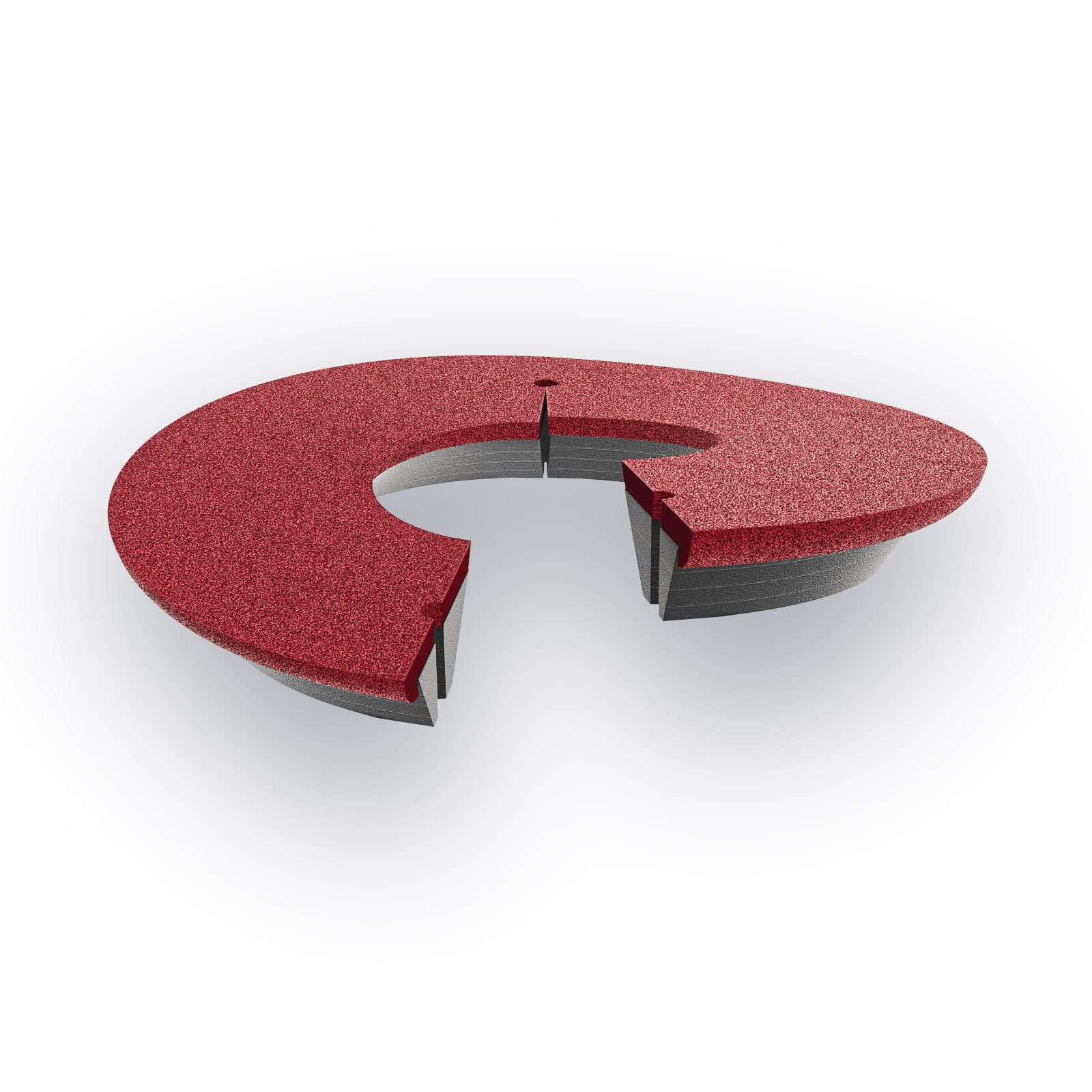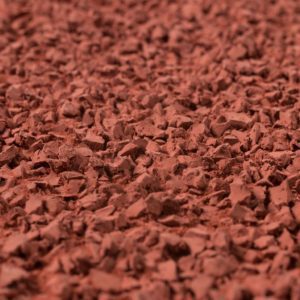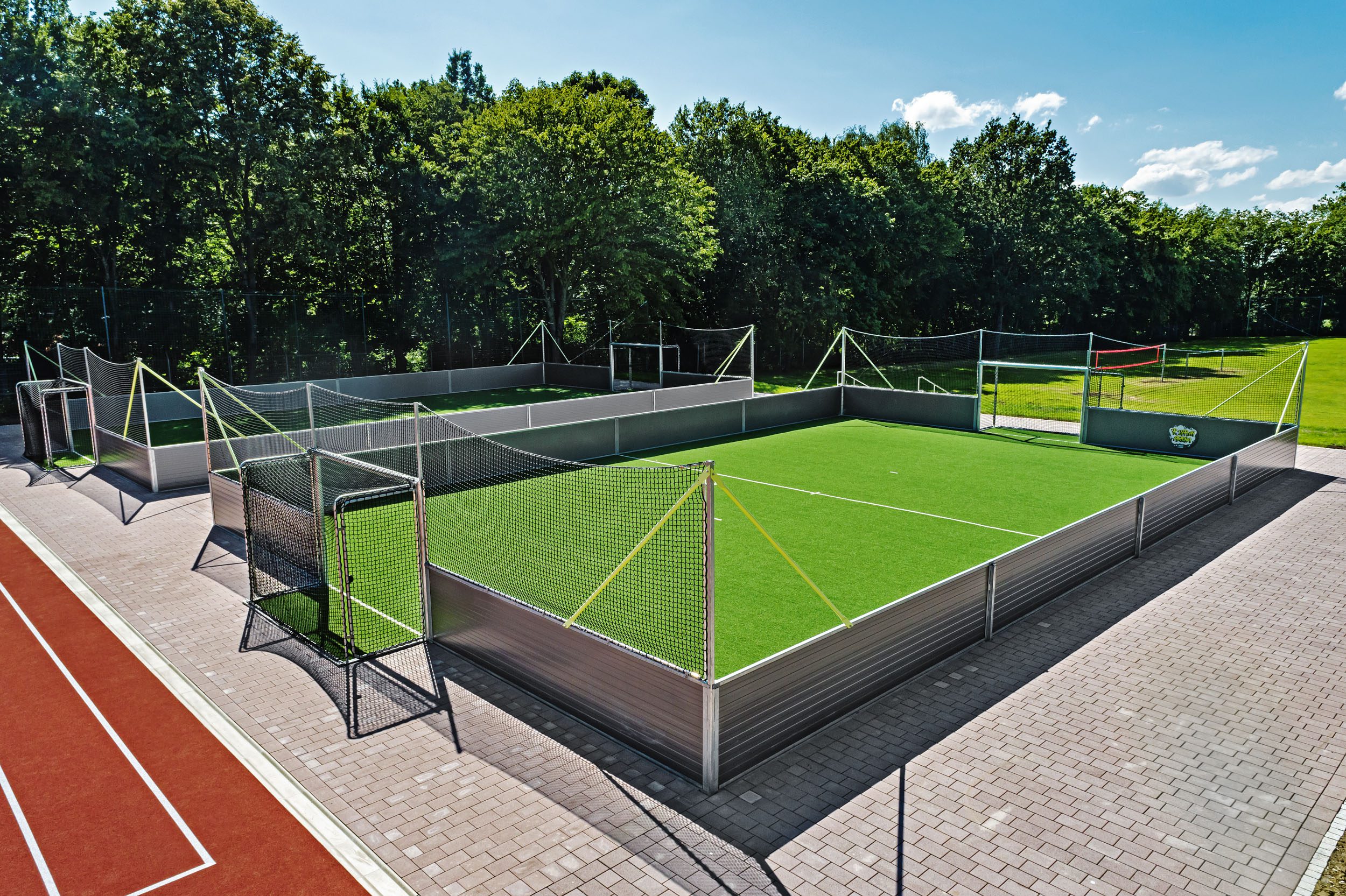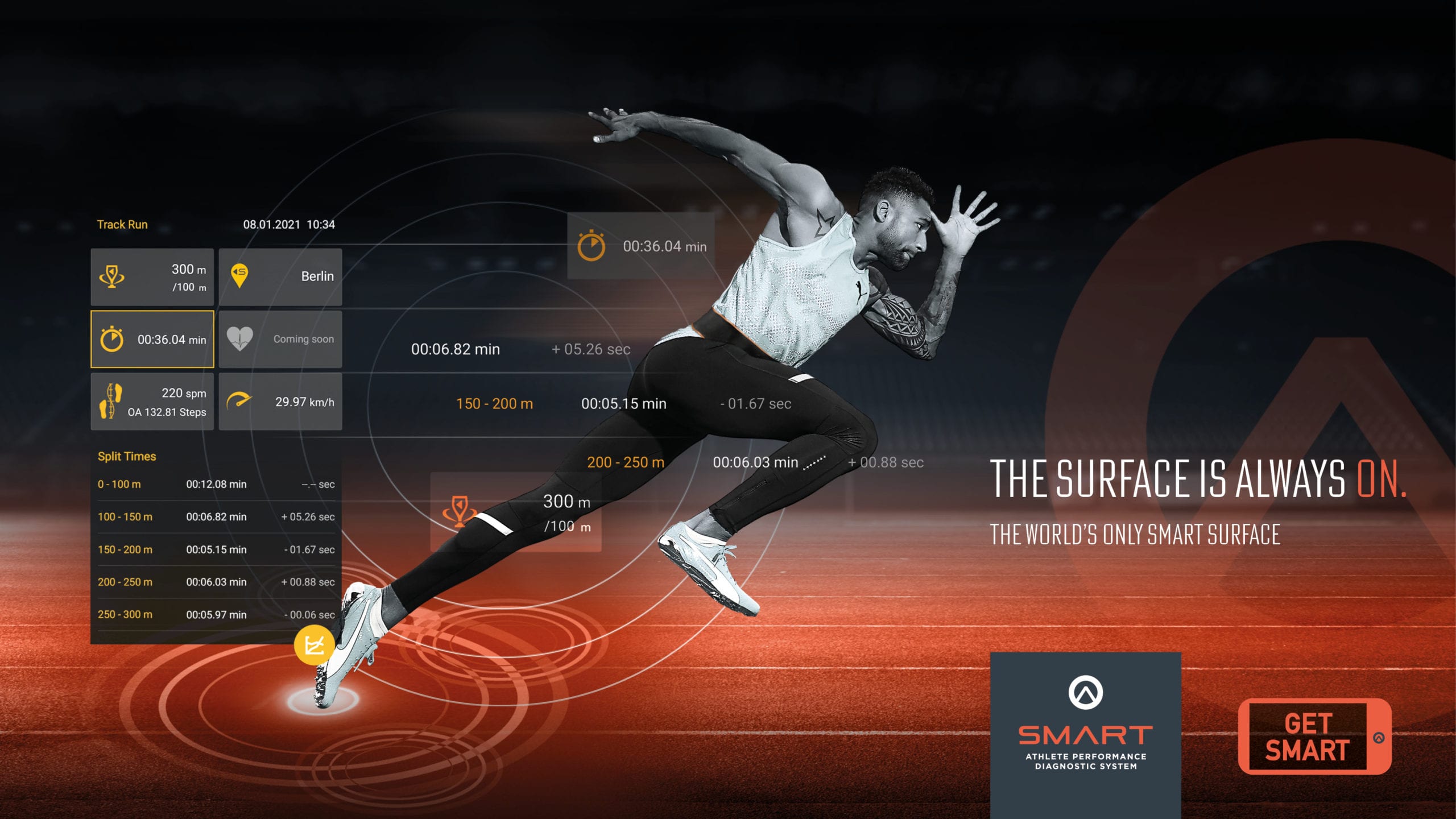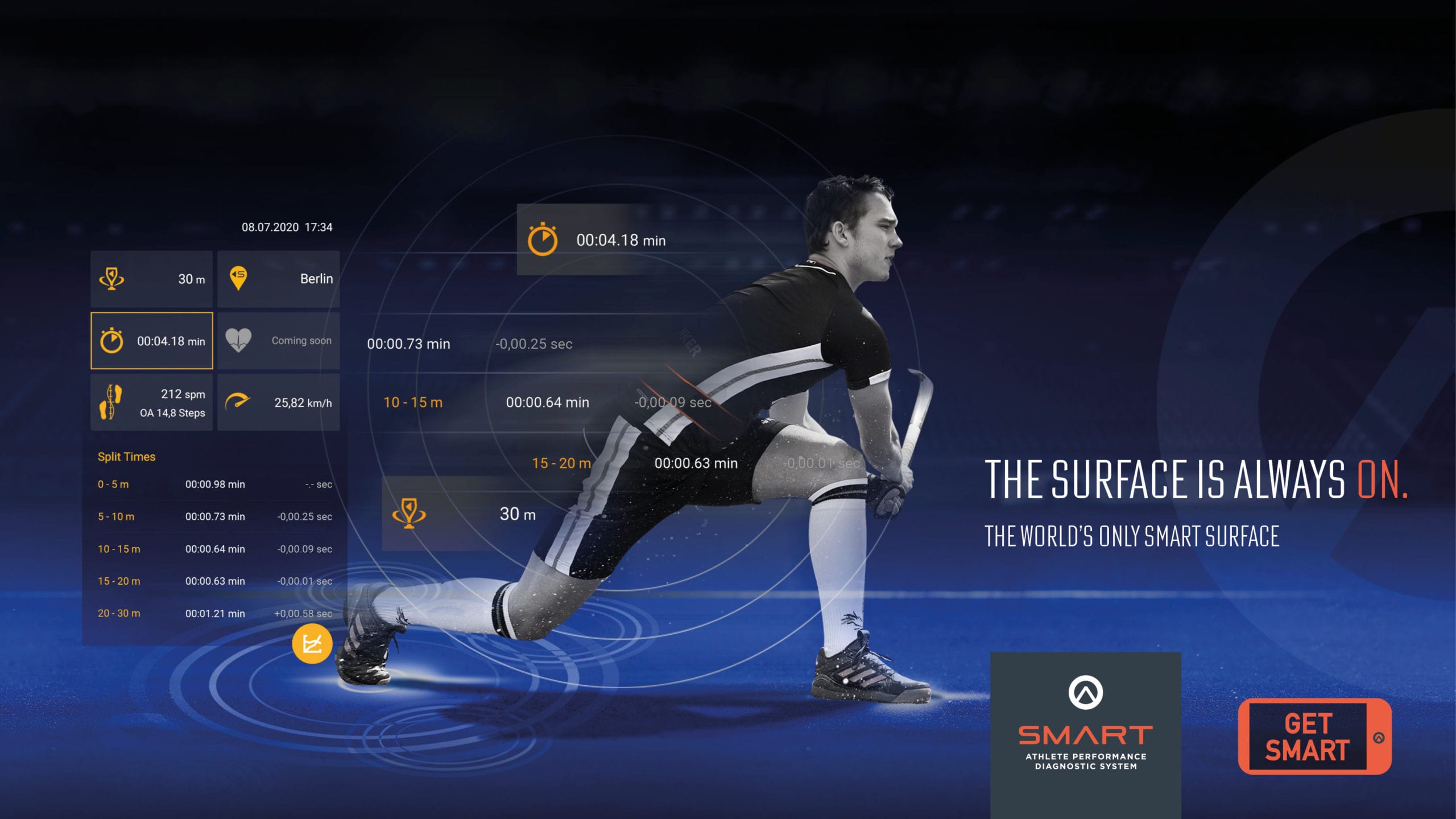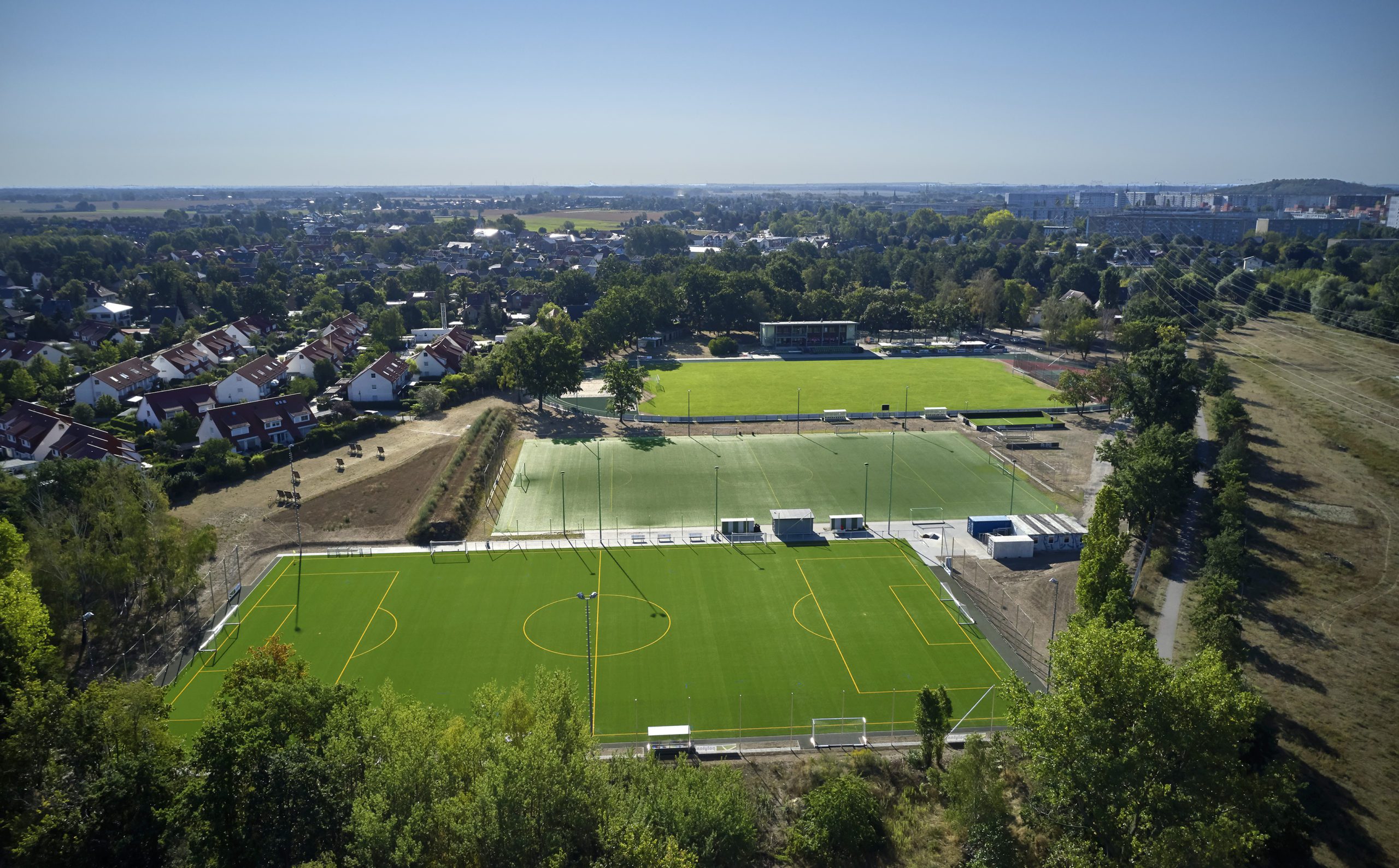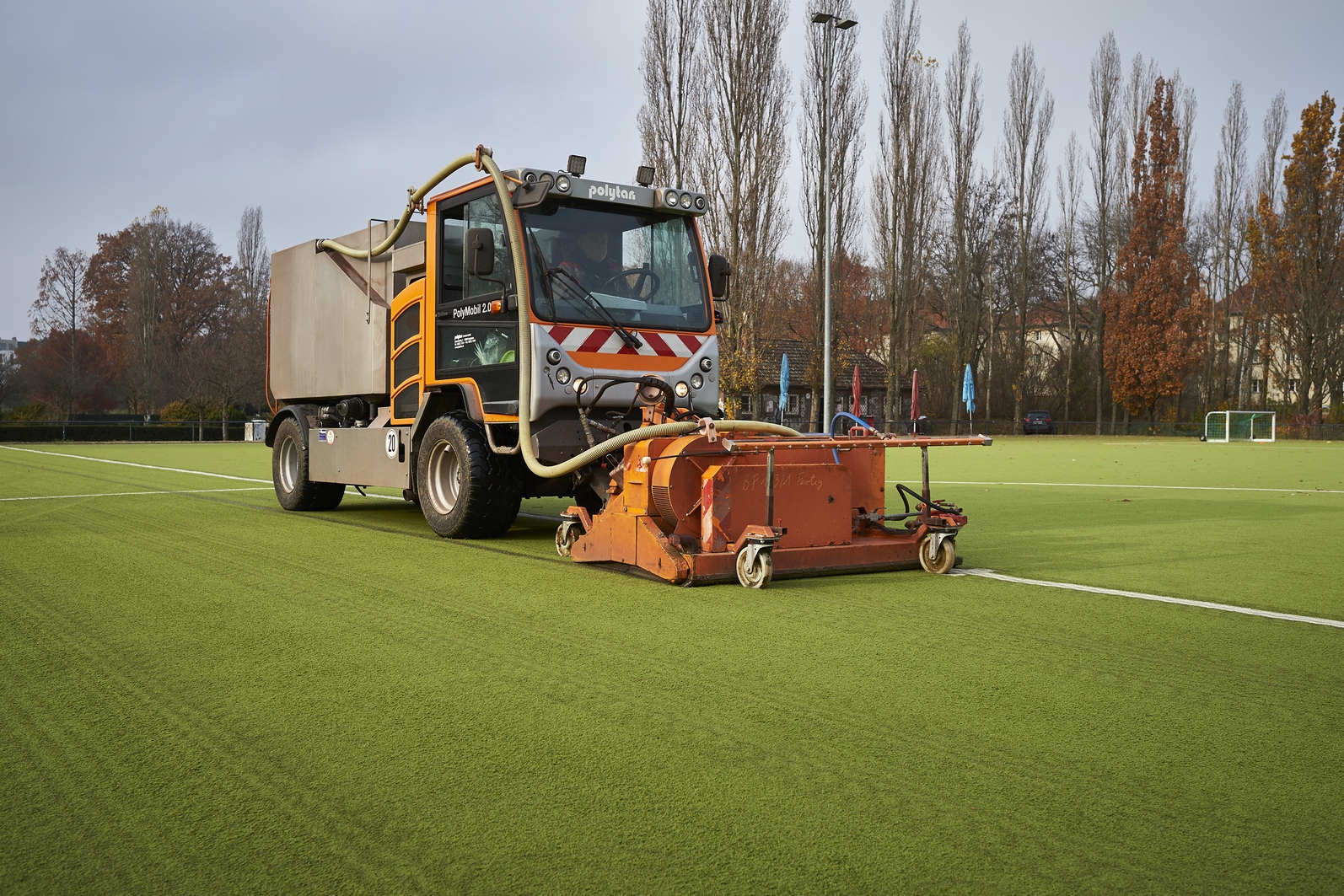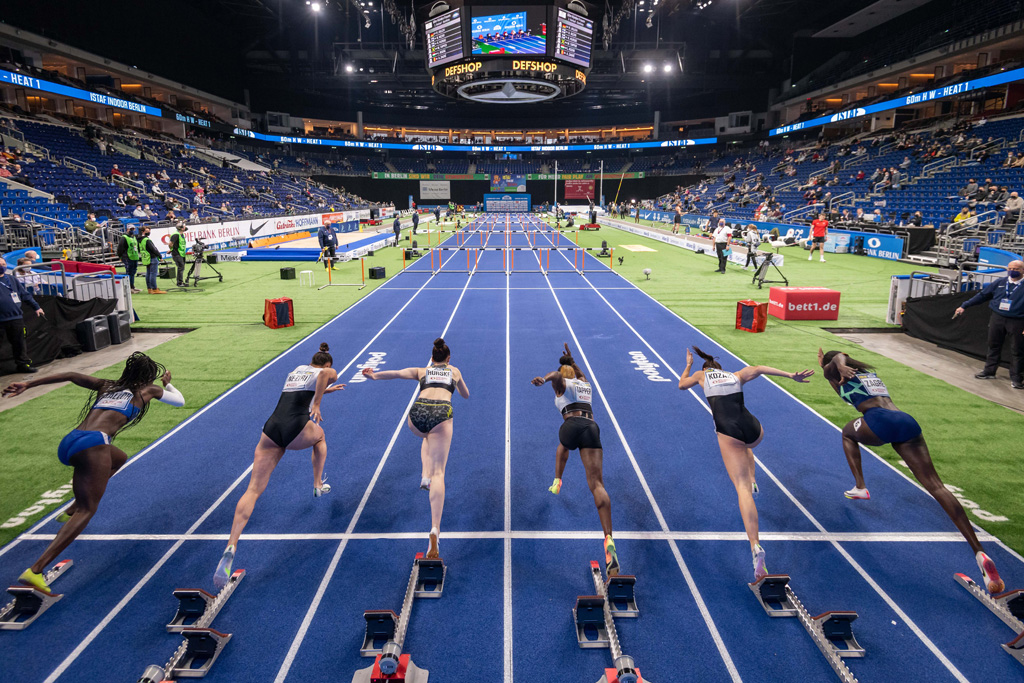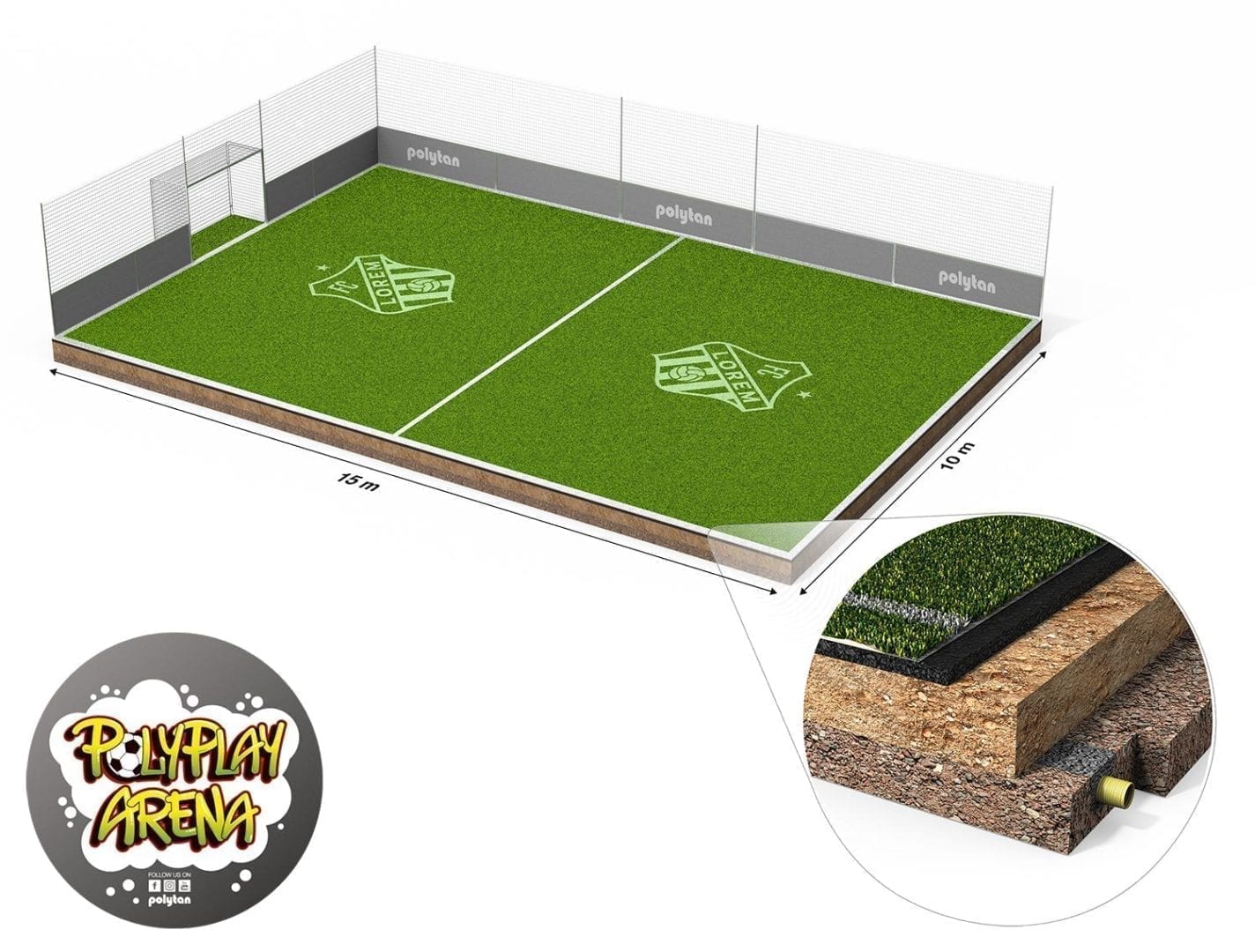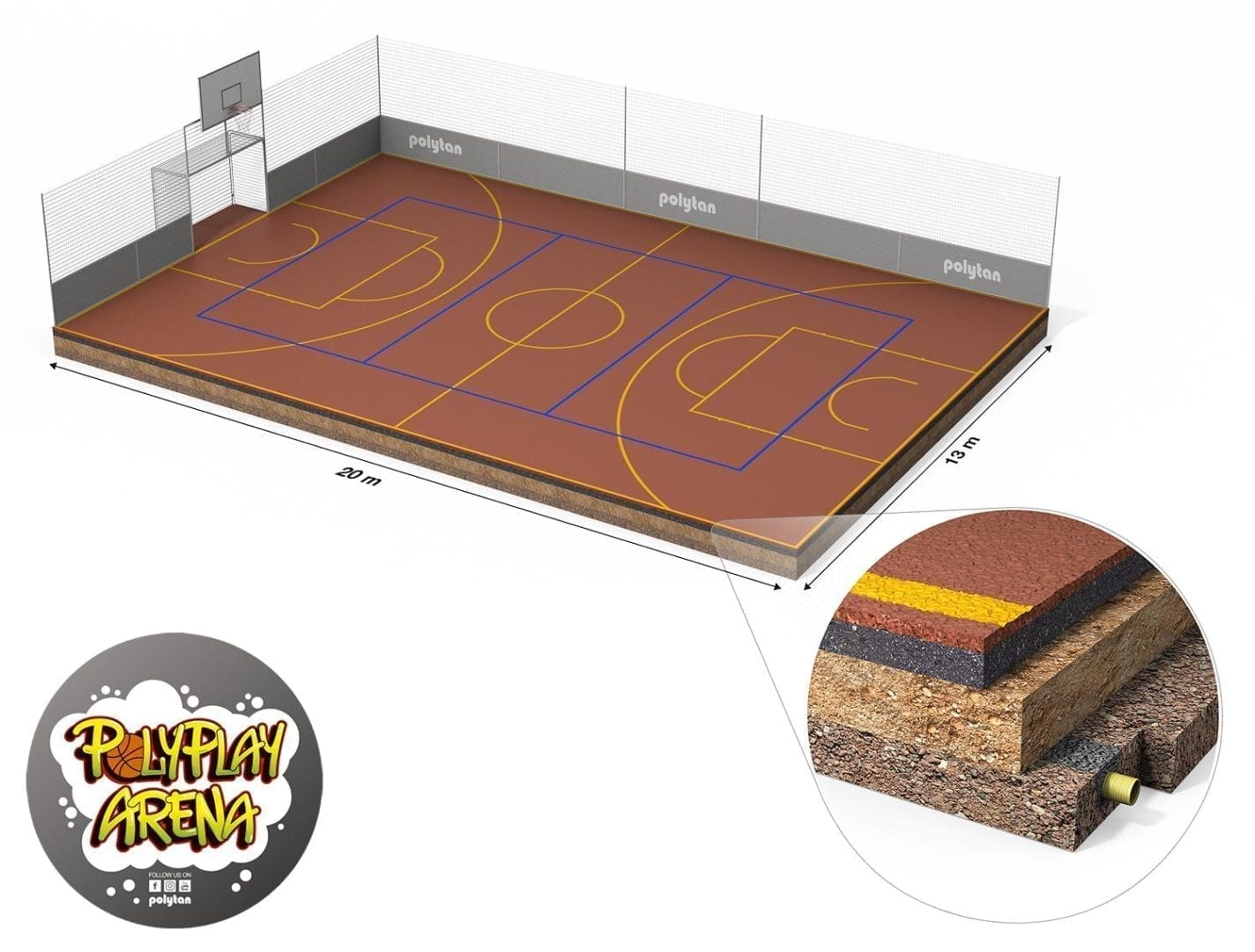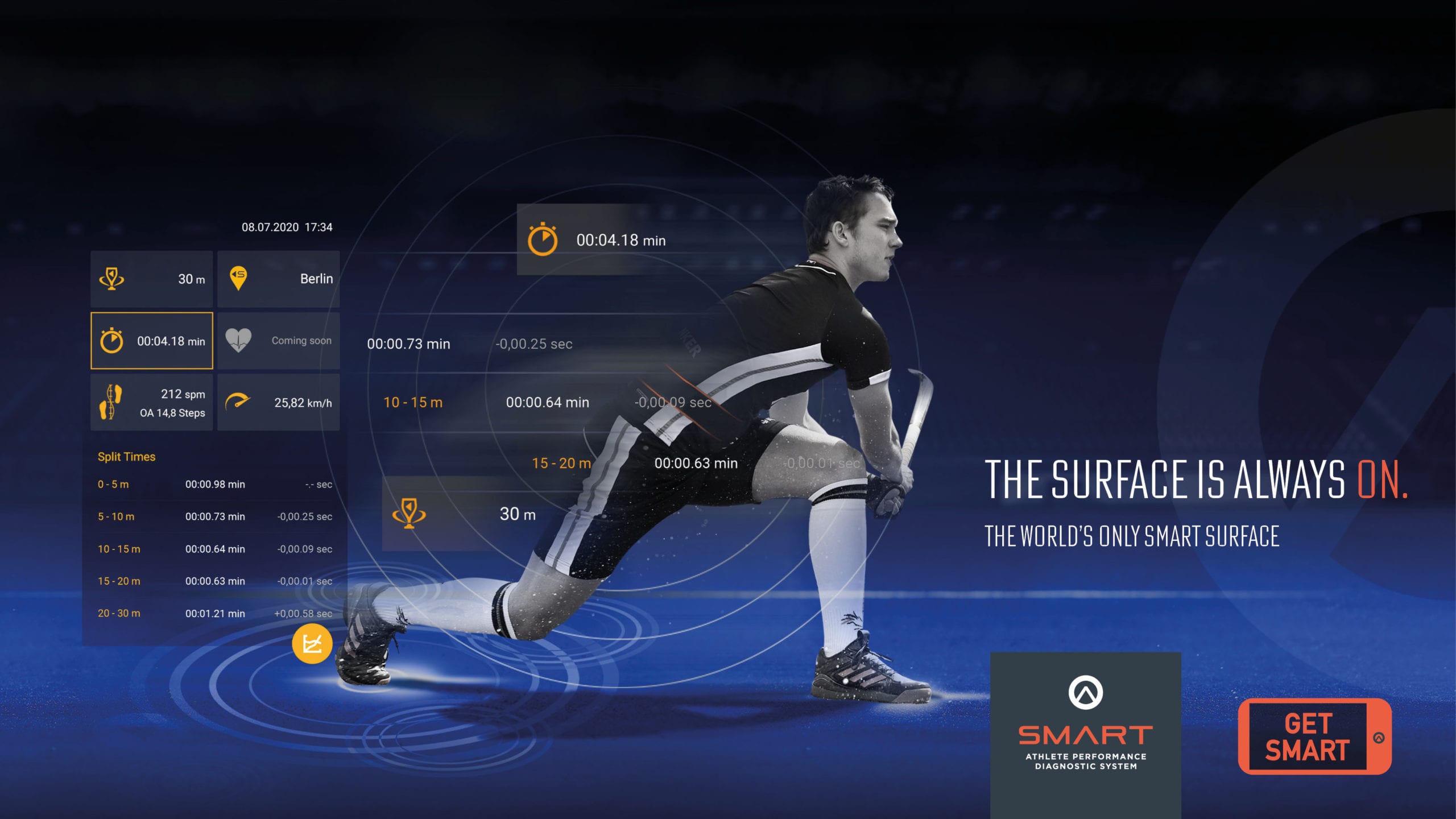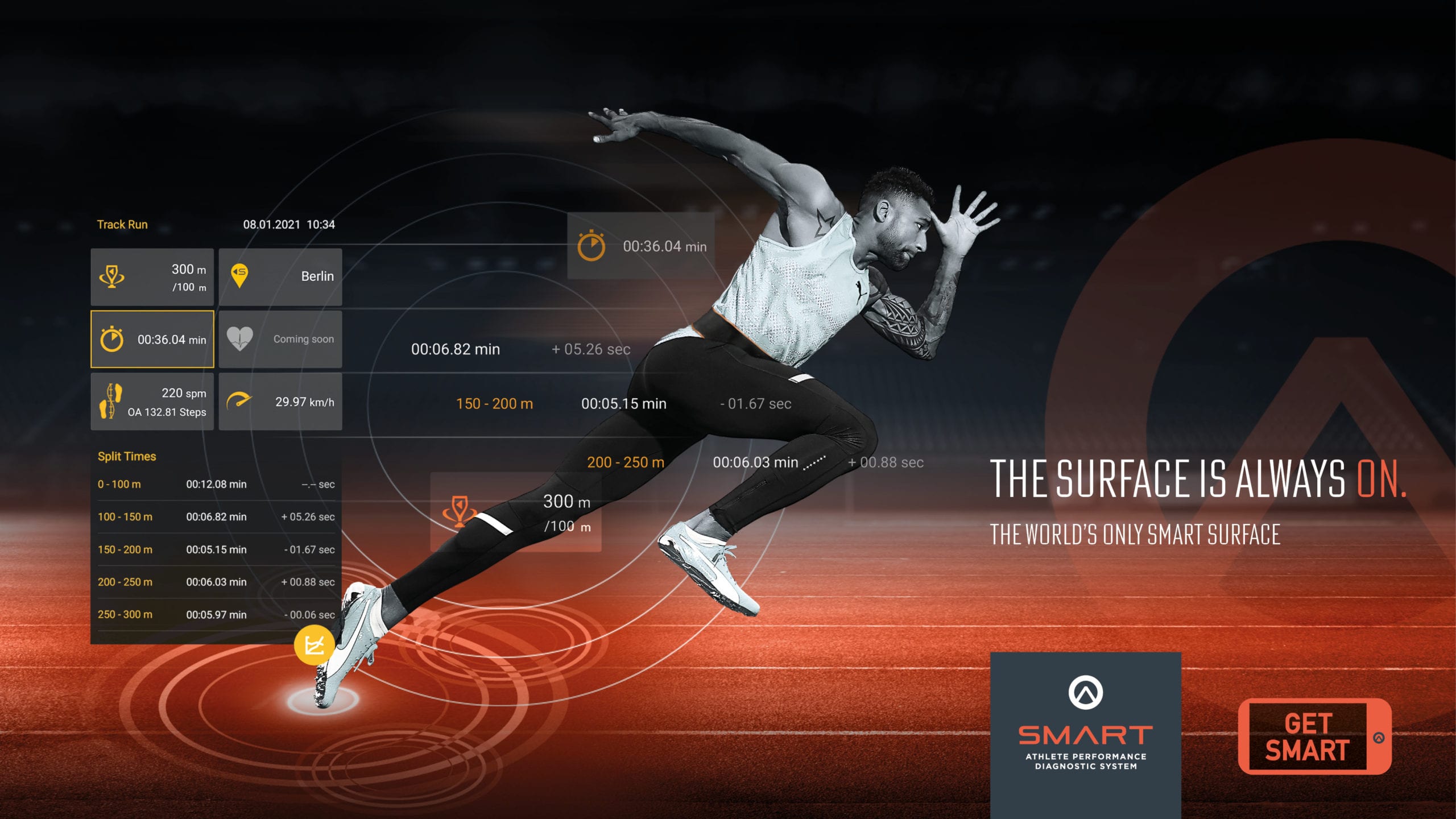On the outskirts of Berlin, a European pilot project featuring one of the most cutting-edge sports grounds in Brandenburg has come into be-ing: the “sports facility of the future.” Located on the grounds of the SV 1908 GRÜN-WEISS Ahrensfelde (GWA) sports club, the facility combines ecological, social and economic benefits with functional athletic properties and high usage frequency. The flagship project proves that a sports facility can be built and operated in an environmentally friendly, resource-saving and economical way. Polytan contributed significantly to the project’s success using sustainable product innovations.
What does this sports field of the future look like? Which materials were used? How is it illuminated? Which smart technologies support performance diagnostics? A group of experts was formed to develop this exemplary sports facility, including representatives from the North-East German Football Association (NOFV), Ahner Landscape Architecture, the Institute for Communal Sports Development Planning (INSPO), the International Association for Sports and Leisure Facilities (IAKS) and various manufacturers. Just as importantly, the project received the support of the Ahrensfelde community. Polytan contributed its expertise in the sustainability of sports surfaces and artificial turf systems, as well as professional performance diagnostics.
Sports facilities through the ages
Ahrensfelde is a typical example of how urban areas of major European cities have changed. Sports trends come and go, and while individual sport is growing in popularity, mass sports and competitive sports are also becoming increasingly important. Even the age structure is changing, as sport has become an important outlet for work-life balance alongside a typical office job. This calls for sports facilities that are more flexible and versatile. Ideally, a sports ground would be a combination of facilities offering different sports opportunities, which would be at least partially publicly accessible, multifunctional and family friendly. Digital technology is also playing an ever larger role in amateur and recreational sports. The relevance of sports in society hasn’t changed in generations: it connects people, cultures and generations, promotes solidarity, health and stress relief, and teaches respect and fair treatment of others. Accordingly, sports facilities make an extremely valuable contribution to society.
Old grounds a reflection of many German sports clubs
Prior to its transformation, the grounds of the SV 1908 GRÜN-WEISS Ahrensfelde sports club consisted of two outdated playing fields (one natural, one artificial) and a running circuit. Like countless sports clubs across Germany, the old facilities couldn’t accommodate the desired number of games and training sessions, and the natural grass playing field in particular was often limited in its use due to weather conditions. This gap between supply and demand made the club an excellent candidate for an artificial turf pitch.
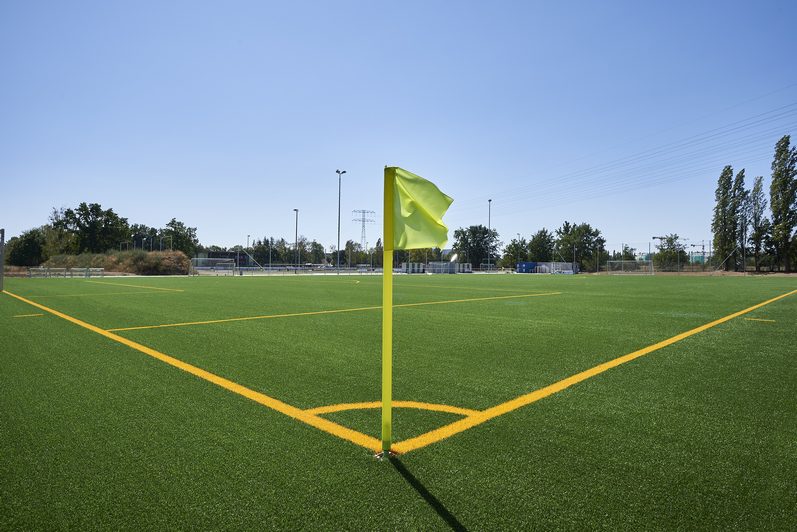
Sustainable, resource-saving construction materials
The futuristic concept for the sports facility in Ahrensfelde was based on a holistic view of the entire lifecycle of the facility. For starters, the construction materials contain a high percentage (over 50%) of recycled materials and minimise CO2 emissions. In addition, care was taken to ensure that the products are sustainable throughout their entire lifecycle, for example by reducing water or energy consumption and maintenance requirements, while continuing to provide optimal training conditions. An artificial turf pitch in particular significantly reduces the need for maintenance and associated costs, and can be used intensively all year round.
Artificial turf with an exemplary environmental footprint
With LigaTurf Cross GTzero, Polytan has brought the world’s first CO2-neutral artificial turf for football to market. It is manufactured 100% climate-neutrally without compromising on playing characteristics. This is made possible through a combination of different measures, including a new manufacturing process and the use of a sustainably farmed, organically based synthetic material.
The turf’s water-permeability prevents sealing of the ground surface, while a drainage mechanism combined with mineral filter systems helps protect groundwater from pollution by environmentally harmful substances. No manual watering is necessary – saving Ahrensfelde around 390,000 litres of water every year. There is also no need for fertiliser or weed killer. The new artificial turf is filled with a mineral filler. LigaTurf Cross GTzero combines smooth and textured filaments, utilising the advantages of both to create the ideal football pitch. Aesthetically pleasing, tactile and highly functional, the turf offers ideal ball-rolling properties, optimal player protection, long-term weather-resistance, and high usage intensity and durability.
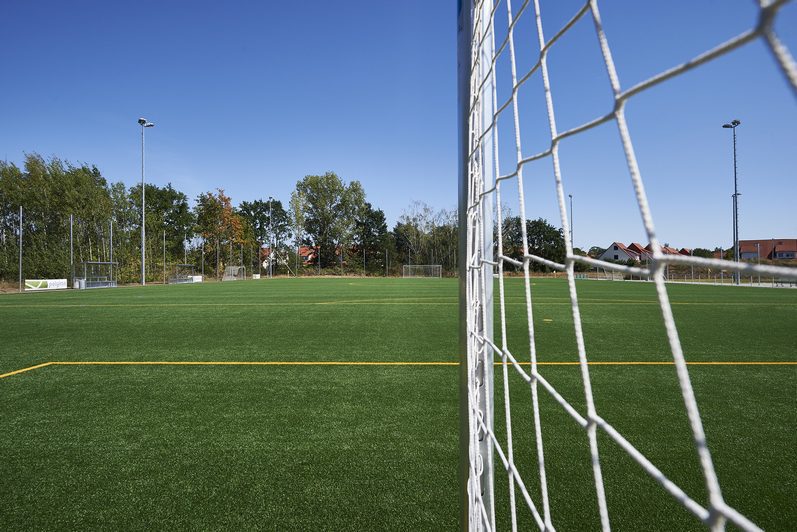
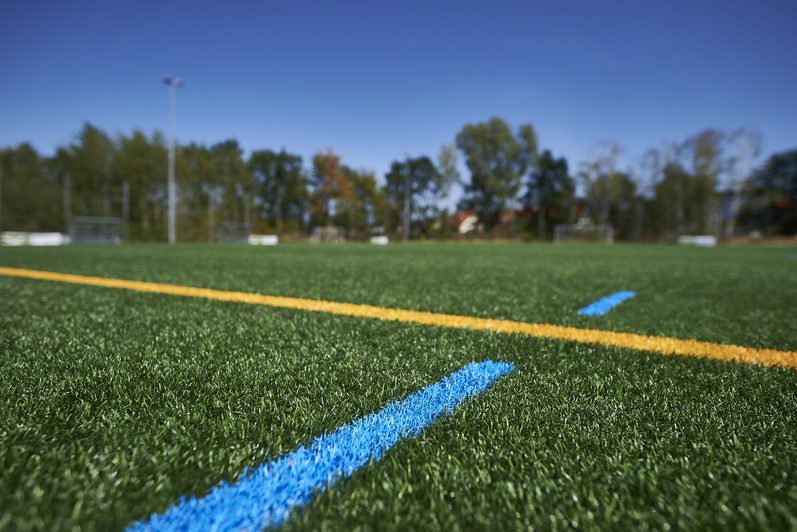
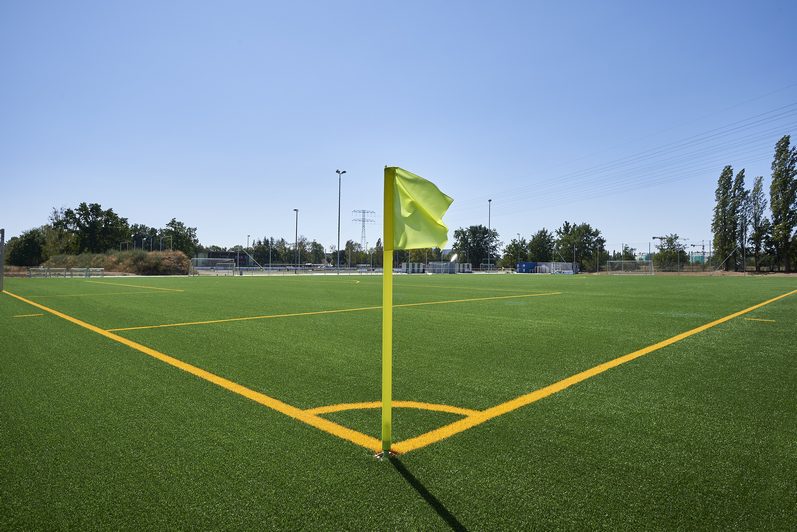
The benefits of elastic base layers
Elastic base layers have been used for over 40 years. The base layer provides the necessary protective function for athletes while combining with the artificial turf layer to deliver optimum performance. It is also the perfect example of upcycling, as it has an extremely long lifespan and can be reused and recycled multiple times. The renovation in Ahrensfelde impressively demonstrates how an old elastic base layer can be recycled into a new elastic base layer using a modern processing technique. A measurement of its functional properties shows that this base layer offers optimal values in accordance with DIN/EN and meets all the requirements of sporting associations. A shining example of closing the raw material cycle.
GRÜN-WEISS Ahrensfelde with matching running track in green and white
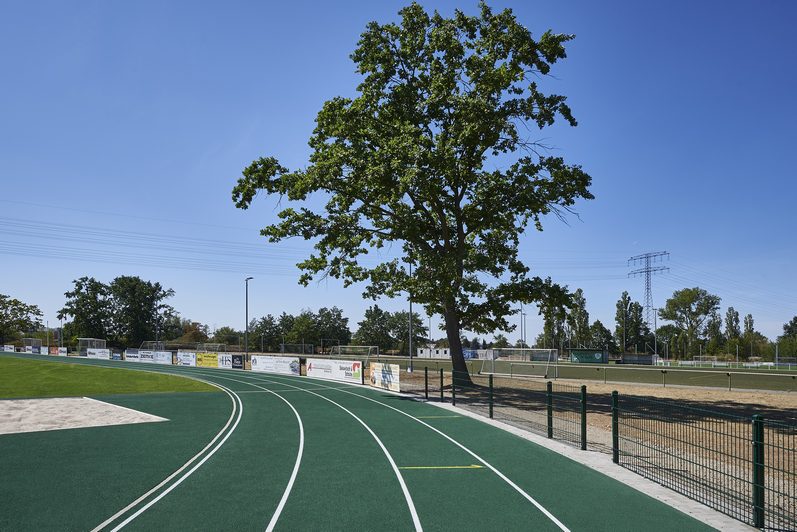
Polytan SMART – digital performance diagnostics
Polytan SMART is a digital performance diagnostics system that measures and evaluates training and competition data of athletes, such as speed, movement sequences, the dynamics of changes in direction, and jumping performance. The data can be viewed on a smartphone app. The precise time recordings and performance diagnostics are suitable for school and professional sports, as well as for ambitious amateur athletes. The technology is based on magnetic barriers that are permanently embedded in the running track and the artificial turf, as well as small sensors that are worn directly on the athlete’s body. The barriers are completely invisible under the surface so there are no protruding obstacles and the technology is optimally protected against vandalism.
Taking full responsibility
Conclusion of the GWA working group: “The sports facility of the future, now”
“Three years ago, we formulated our idea and put it into action, step by step. Now we can look back on our project with pride and have even convinced other building owners of our concept. Since last year, new facilities have been built nearby, designed and constructed with sustainability in mind from start to finish. The collaboration between multiple working groups and the various sports associations has created a dynamic that transcends national borders. Together with the dedicated working group of the North-East German Football Association and the Brandenburg state government, we will continue to propagate this idea and incorporate new innovations. Once again, we thank everyone involved for their support. In particular, we give special thanks to the Brandenburg state government on behalf of the state and district-level sports associations (LSB and KSB), the Ahrensfelde community, the companies Ahner, Schmitt and Polytan, and all the sponsors of GWA. We are very thankful to Polytan for making us the first sports facility to be awarded the title ‘Polytan Sports and Innovation Centre’. This partnership will continue to ensure the high quality and further integration of innova-tions for many years to come! Thank you, everyone!”
